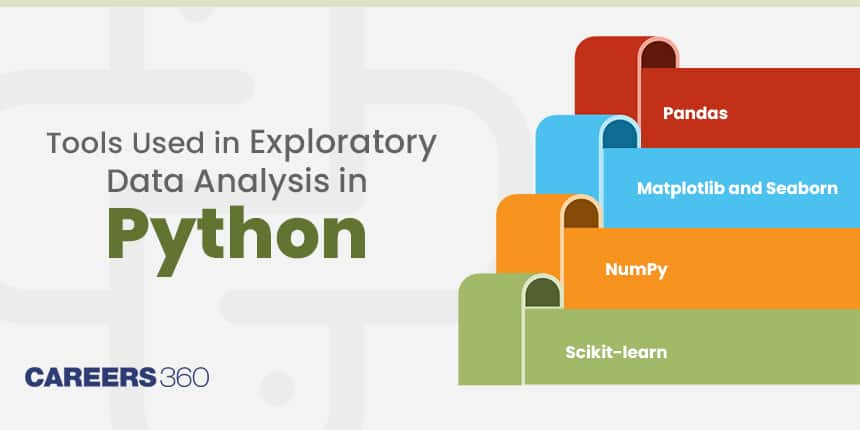Silver Oak University BCA Admissions 2025
Management Conclaves | Industrial visits to eminent companies | Celebrated guest speakers
In data science, Python exploratory data analysis stands as a powerful lens, allowing analysts to look into the intricate details of datasets. Python, renowned for its versatility, becomes the canvas upon which analysts paint their insights.
This article looks into the importance of exploratory data analysis with Python, EDA steps in Python, and the array of tools that transform raw data into actionable insights in EDA using Python. Those interested in gaining further knowledge in this field can explore some of the Python Certification Courses listed on our website.

Exploratory Analysis in Python transcends traditional data summaries, involving a holistic exploration of data through Python's rich libraries. It is a process where analysts use Python to visually and statistically dissect datasets, uncovering hidden patterns and relationships that shape the narrative within the data.
One must note that steps like data cleaning and data engineering are prerequisites to exploratory analysis. Once we are at a “data ready” state, the analysis begins which can further be streamlined into an automated pipeline.
Also Read:
In the labyrinth of real-world datasets, the need for Python EDA is undeniable. Python, as the tool of choice, enables analysts to:
Detect Patterns: Python empowers analysts to identify intricate patterns and trends, enabling a deeper understanding of the data.This is specifically important in unsupervised learning where data is unlabelled.
Outlier Detection: Python EDA tools excel in highlighting outliers, pivotal in identifying anomalies that can significantly impact analysis.
Assess Data Quality: Python EDA capabilities evaluate data quality, allowing analysts to rectify issues like missing values and inconsistencies.
Feature Selection: Python EDA aids in the identification of relevant features, streamlining subsequent modelling and analysis.
Also Read:
Given below are the EDA steps in Python:
Using Pandas in Python, analysts can seamlessly import and structure datasets. For example:
# import the pandas library for packaged data exp H2 - Acyclic Graphsloratory services
import pandas as pd
# Load dataset
df = pd.read_csv('your_dataset.csv')
Python's Pandas handles missing values, duplicates, and inconsistencies. An example of cleaning data in Python:
# Handling missing values
df.dropna(inplace=True)
# Removing duplicates
df.drop_duplicates(inplace=True)
Python's Pandas provides descriptive statistics for initial insights:
# Descriptive statistics
df.describe()
Matplotlib and Seaborn in Python create visualisations to unveil patterns:
import matplotlib.pyplot as plt
import seaborn as sns
# Creating a histogram
sns.histplot(df['column_name'], kde=True)
plt.show()
Python's Pandas or NumPy aids in exploring correlations between variables:
# Correlation matrix
correlation_matrix = df.corr()
Python's statistical methods and visualisation techniques handle outliers:
# Outlier detection using Z-score
from scipy.stats import zscore
z_scores = zscore(df['column_name'])
outliers = (z_scores > 3) | (z_scores < -3)
Also Read:
Python's extensive ecosystem provides an arsenal of tools:
Python's data manipulation library, Pandas, is indispensable for importing, cleaning, and organising datasets.
These Python libraries offer a rich palette for creating visually appealing and informative plots.
As the backbone for numerical operations, NumPy empowers Python to handle complex mathematical computations seamlessly.
This machine learning library extends Python's capabilities, offering tools for feature scaling and dimensionality reduction.
Exploratory Data Analysis in Python is an illuminating phase in the data analysis journey. Python's tools and libraries transform data into narratives, each plot and statistic bringing analysts closer to unlocking the true potential of their data. As Python's capabilities evolve, the exploration of data becomes not just a process but a profound narrative, revealing stories within the numbers and leading the way towards data-driven excellence.
Exploratory Data Analysis in Python is a process that involves visually and statistically exploring datasets to uncover patterns and insights. It is essential because it helps analysts understand the structure of the data, detect anomalies, and make informed decisions.
Python, through libraries like Pandas, provides powerful tools for importing and structuring datasets. Pandas handles tasks such as handling missing values, removing duplicates, and ensuring data cleanliness.
Data visualisations, created with libraries like Matplotlib and Seaborn, play a crucial role in EDA. They help analysts uncover patterns, trends, and outliers, making complex data more accessible and interpretable.
Yes, Python offers statistical methods and visualisation techniques for outlier detection. Identifying outliers is important as they can significantly impact the accuracy of analysis and decision-making.
Key Python libraries for EDA include Pandas, Matplotlib, Seaborn, NumPy, and Scikit-learn. Pandas is used for data manipulation, Matplotlib and Seaborn for data visualisation, NumPy for numerical operations, and Scikit-learn for advanced analytics and machine learning tasks. Each library contributes to different aspects of the EDA process, making Python a comprehensive platform for data exploration.
Counselling Date:28 June,2025 - 07 July,2025
Ranked amongst top 3% universities globally (QS Rankings)
Ranked #46 Among Universities in India by NIRF | 1950+ Students Placed 91% Placement, 590+ Recruiters
3-year undergraduate program focusing on practical computing skills.
100% Placement Assistance | Avail Merit Scholarships
NAAC A+ Grade | Ranked No.1 Private University in India (QS World University Rankings 2025)
NAAC A++ Accredited | NIRF 2024 ranked 42nd among Indian universities| 150+ Multidisciplinary Programs | Centre for Career Enhancement